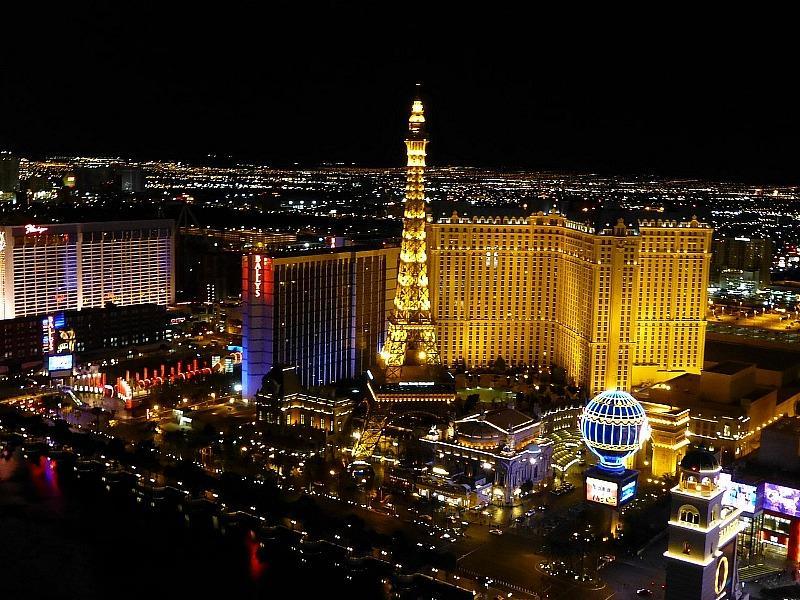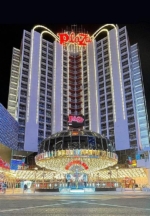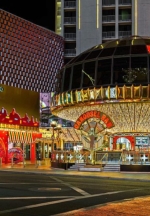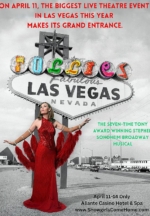Las Vegas, often dubbed the “Entertainment Capital of the World,” is a city that has risen from the Mojave Desert to become synonymous with glamour, excitement, and excess. Its history is a captivating tale of transformation, from a dusty stopover for pioneers to a sprawling metropolis of neon lights and world-class entertainment.
Early Beginnings: A Desert Oasis
In the early 1900s, Las Vegas was a quiet and humble town. Its name, which means “The Meadows” in Spanish, reflected the lush green areas fed by natural springs. It was primarily a rest stop for travellers heading to California, known for its natural beauty rather than its nightlife.
The Railroad Arrives
However, the city’s fate was set to change with the arrival of the railroad. The completion of the San Pedro, Los Angeles, and Salt Lake Railroad in 1905 brought new life to Las Vegas. This railroad linked Salt Lake City to Los Angeles, making Las Vegas a strategic stop for passengers and freight. The town’s population began to grow, and businesses, including small casinos and hotels, emerged to cater to travellers’ needs
The Birth of a Gambling Haven
It wasn’t until 1931 that Las Vegas took its first significant step towards becoming the entertainment powerhouse we know today. The state of Nevada legalised gambling, marking a turning point in the city’s history. This move transformed Las Vegas into a hub for gaming and entertainment, and the first official casino, the Northern Club, opened its doors. From then on, the city’s destiny as the world’s casino capital was sealed.
The Golden Era: The Rise of the Las Vegas Strip
Throughout the 1940s and 1950s, Las Vegas experienced unprecedented growth. The famous Las Vegas Strip began to take shape, with iconic venues like the Flamingo and the Desert Inn leading the way. The city attracted famous figures like Frank Sinatra, Elvis Presley, and the Rat Pack, solidifying its reputation as an entertainment mecca.
Luxury and Opulence: Caesar’s Palace and Beyond
In 1966, the historic Caesar’s Palace opened its doors, becoming an instant symbol of luxury and excess. This casino resort set new standards for opulence and entertainment, paving the way for the extravagant mega-resorts that would later define the Las Vegas Strip.
Beyond Gambling: A Diversified Entertainment Hub
As the city continued to expand and evolve, it embraced a broader range of entertainment beyond just gambling. World-class restaurants, high-end shopping, and spectacular shows became integral parts of the Las Vegas experience. Today, you can catch performances by famous artists, enjoy gourmet dining, and explore countless attractions beyond the casinos.
Global Casino Evolution:
While Las Vegas has undoubtedly remained the epicentre of the gambling world, it’s essential to note that the casino industry has evolved globally. For example, you can explore unique casinos in Sweden that offer a distinct Scandinavian gaming experience without a Swedish licence, which contrasts with the vibrant Las Vegas scene. These Swedish casinos provide an excellent alternative for those seeking a different gaming atmosphere, featuring a blend of modern design and Nordic charm.
In Conclusion
In conclusion, Las Vegas’s transformation from a dusty desert town to a glittering metropolis is a story of ambition, innovation, and reinvention. It has grown from a simple railroad stop to a city that defines entertainment and gaming on a global scale. With its rich history and ever-evolving attractions, Las Vegas continues to capture the imagination of visitors from around the world, making it a timeless icon of excitement and glamour.




















